Alan Wake 2 is stuffed with PC tech. It feels like one of the true next-gen games that we’ve seen on PC, short of remakes like Portal RTX and updates like Cyberpunk 2077. From path tracing to frame generation to AI-powered denoisers, Alan Wake 2 shows off what PC has to offer in 2023, even if that means leaving less powerful rigs behind in this dust.
Although the game itself is straightforward enough, its performance on PC is anything but. Alan Wake 2 is a stunning showcase with high-end hardware and all of the modern bells and whistles enabled, but it’s a slog on lower-end machines that fall outside of its demanding minimum hardware requirements. There’s good and bad here, and after spending some time with the game, we need to examine both.
With three people playing the game here at Digital Trends, we did encounter one bug that would hard-lock progression, but I wasn’t able to recreate it. Still, there are other reports of similar issues, ranging from losing 30 minutes of progression to fully resetting the game, so keep those in mind if you want to pick up the game on release day.
Low isn’t bad

A popular Reddit thread circulated after the release of Alan Wake 2′s system requirements, claiming that only 7% of PC gamers will be able to run the game at 1080p at 60 frames per second (fps). That’s not true. I tested five graphics cards with the game: the RTX 4090, RTX 4070, RX 7600, RTX 2060 Super, and the RX 5700. I was able to hit between 40 fps and 60 fps with each of them without the assistance of upscaling by adjusting the resolution and graphics settings.
Alan Wake 2 supports both DLSS 3.5 and FSR 2, and you’ll get a much more consistent experience turning one of the features on. It seems the system requirements are providing a worst-case scenario, though. With the RTX 2060 Super, for example, I only dipped down to 30 fps once at 1080p, while mainly hovering in the mid-40s. That was with the game set to its High preset without upscaling.
We need to talk about the quality presets, too. Unlike most games, Alan Wake 2 doesn’t have an “Ultra” preset. It includes Low, Medium, and High presets. Even the Low preset looks great, so unlike what we’ve seen in games like Diablo 4, there isn’t a “potato mode” for the lowest-end hardware. There’s an argument there should be, but it’s clear Remedy intends for most players to actually use the graphics settings rather than default to the highest and lowest presets.
There’s some room with these presets as well. With the RTX 2060 Super, I was able to achieve between 55 fps and 75 fps with the Low preset. As you can see in the comparison shot below, the difference in image quality isn’t huge, and there’s a massive performance uplift. This was at 1080p without upscaling as well.

I was able to achieve a similar performance level by keeping all of the settings maxed out and falling back on DLSS’ Performance mode. It doesn’t look great at 1080p, but it provided a similar level of performance as the Low preset. It’s a pick your poison type of situation, but it’s good to see that at least PC players have options to improve their performance, unlike a game like Starfield, where hefty CPU requirements and limited upscaling options means you just have to settle for lower performance.
Still, Alan Wake 2 is very demanding. As for whether that hardware demand is worth the visual payoff, that’s up to you. It’s clear Remedy set out to create a very dense, realistic world with Alan Wake 2, even if the performance on lower-end hardware suffers as a result. It may seem small, but a good example of that is the leaf you can see below. It’s not clipping through the stairs, but instead poking out, and the early forest areas of the game are dense with these bushes that move and react to the wind. It’s very immersive. Thankfully, you have options to improve performance, and with a game as visually stunning as Alan Wake 2, that’s about the most PC players can ask for.
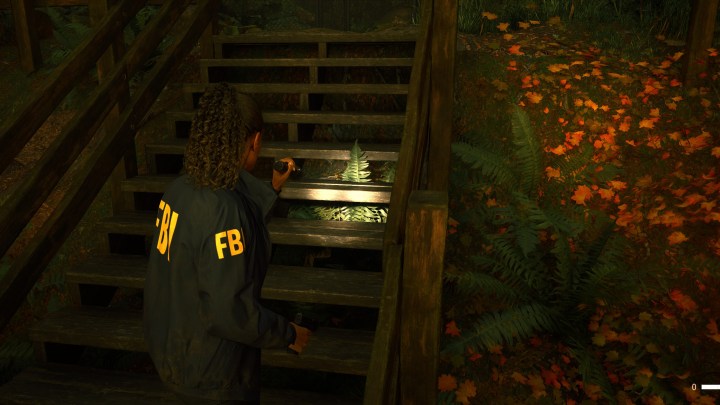
I would lean heavier on the graphics options if you don’t have an Nvidia GPU, however. FSR 2 is a good fallback option, but it exhibits the same instability in fine details that we’ve seen in other games, which is only exaggerated at more extreme quality modes and lower resolutions.
As for PCs that fall outside of the hardware requirements, you’re not going to have a good time with Alan Wake 2. I was able to achieve playable performance on hardware that just met the minimum requirements, but that experience doesn’t make me hopeful for anything less powerful.
DLSS 3.5 is stunning
Alan Wake 2 is the second game we’ve seen with Nvidia’s Deep Learning Super Sampling 3.5 (DLSS 3.5). That includes Super Resolution, Frame Generation, and Ray Reconstruction, with Ray Reconstruction only being available if you turn on path tracing in the game. I’ll get to the path tracing settings later in this section.
This bundle of features is only supported on RTX graphics cards, with Frame Generation being limited to RTX 40-series GPUs. Alan Wake 2 also supports FidelityFX Super Resolution 2 for non-RTX GPUs, and you’ll need to have either DLSS or FSR turned on. Alan Wake 2 handles this in a strange way, though. With FSR 2, you can still set the game to native resolution, and with DLSS, native resolution will instead use Nvidia’s Deep Learning Anti-Aliasing (DLAA). There was some concern that Alan Wake 2 requires upscaling. That isn’t the case, but it’s clear the game was designed around having either DLSS or FSR turned on.
DLSS 3.5 is definitely the way to go if you can manage it. You can see a prime example of that below. From left. you can see ray tracing turned off, ray tracing on without Ray Reconstruction, and ray tracing on with Ray Reconstruction. That setup is consistent throughout the screenshots here.
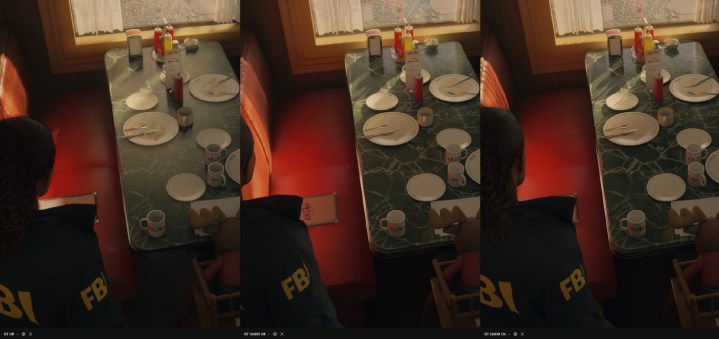
Ray tracing also does a lot to make the lighting in this scene more realistic. The condiment tray and napkins close to the window cast hard shadows from the direct light, while without ray tracing, shadows are simply implied. It’s stunning how Ray Reconstruction can clean up the final image, too. The shadows are much sharper, as is the faint reflection of the window in the table. There are also small details like the shadow cast on the small plate near the middle of the table. It’s clearly a shadow from something behind the menu, which would otherwise be obfuscated without Ray Reconstruction.
The same holds true for direct reflections. Alan Wake 2 uses some screen-space reflections with ray tracing turned off, but it skips smaller reflective surfaces like the puddle near the edge of the sidewalk you can see below. Once again, ray tracing brings that realism, and Ray Reconstruction clears up the final image. It’s remarkable just how much more dimension there is in the image with Ray Reconstruction.

Thankfully, the game doesn’t look bad without ray tracing. In the night scene below, you can see how developer Remedy attempts to capture the same atmosphere without ray tracing, even if the ray-traced version looks better. Here, ray tracing helps carry the light through the street fog in a more realistic way, while Ray Reconstruction bolsters that with better handling of the fence details. Something you can’t see in this static image is how the fence flickers a bit with Ray Reconstruction turned off.
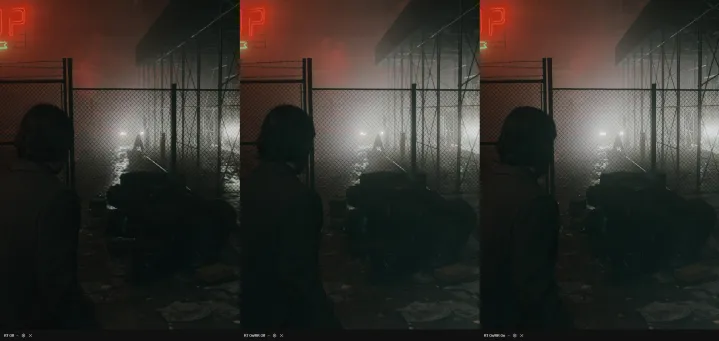
Alan Wake 2 achieves this level of realism with path tracing. In short, path tracing is a more demanding form of ray tracing, but it generally leads to more realistic lighting conditions. The way Alan Wake 2 handles path tracing is a little interesting, though. Unlike Cyberpunk 2077, where there’s a single toggle for path tracing, Alan Wake 2 includes three ray-tracing quality modes. Here’s how they break down:
- Low — no path tracing
- Medium — partial path tracing (one bounce), medium quality for path-traced indirect lighting
- High — full path tracing (three bounces), high quality for path-traced indirect lighting
All of this comes with a massive performance cost. Out of the five GPUs I tested, only two were able to handle ray tracing in Alan Wake 2. It’s no coincidence that those two GPUs supported Nvidia’s Frame Generation tech, which is mandatory if you want to play with ray tracing at any reasonable frame rates.
With the RTX 4090, I was able to hit around 90 fps to 100 fps with DLAA and Frame Generation with all of the settings maxed out at 4K. With the RTX 4070, I had to resort to DLSS Performance mode to achieve 60 fps at 4K, which occasionally dipped lower. If you’re running anything older than an RTX 40-series graphics card, I would recommend against turning on ray tracing. It’s certainly pretty, but the game looks stunning even without all of the ray tracing.
What about mesh shaders?

There was an outcry shortly after Alan Wake 2‘s system requirements went live, which came down to the fact that you would need an Nvidia RTX 20-series or AMD RX 6000-series GPU, or newer, to run the game. In a now-deleted tweet, a developer from Remedy explained this was due to mesh shaders, locking out older GPUs from being officially supported.
This led a lot of PC gamers to assume these cards simply wouldn’t work with the game, which isn’t the case. I was able to boot up Alan Wake 2 and play it on an RX 5700 without dire issues. The game didn’t run great, but it worked. I was able to hit between 35 fps and 55 fps on the GPU with the Medium preset at 1080p, and that was without upscaling.
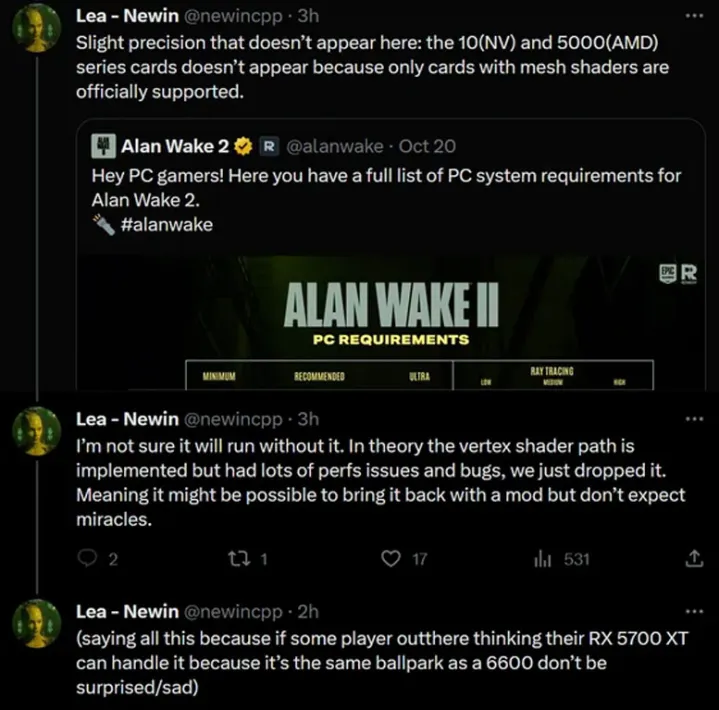
If you have a GPU that isn’t supported, you’ll get a warning when you launch the game, but it will still boot. You’ll just experience lower performance. The RTX 2060 Super I tested was able to average between 40 fps and 60 fps at 1080p High, despite the fact that the RX 5700 is faster in most other games. If you’re sitting on an RX 5000 or GTX 10-series GPU, or older, it’s probably best to wait on Alan Wake 2 until you can upgrade your PC, even if the game will technically run.
No HDD support

For as much as DLSS 3.5 shines in Alan Wake 2, the PC version has a number of issues. First and most pressing is HDD support. The game doesn’t technically support spinning hard drives, and after just a few minutes in the game, it’s clear why. The game will still run and play just fine — based on what hardware you have in your PC, at least — but it will quickly turn into a mess with a spinning hard drive. Load times, expectedly, take multiple minutes on a spinning hard drive, and you’ll often have to wait for at least a minute when transitioning between chapters.
The issues go far deeper, though. With a spinning hard drive, audio tracks will desync from each other. That means you’ll run into issues where dialogue from a cutscene carries over into gameplay, as well as facial animations not matching with the voiceovers. The biggest problem was audio stuttering, though. It seems the various audio tracks are all fighting with each other for bandwidth while being read from the drive, leading to situations where sound effects will abruptly stop when dialogue starts, all before coming back multiple seconds later. It’s bizarre and clearly not the way Remedy intended players to experience Alan Wake 2.
As mentioned, HDDs aren’t supported in Alan Wake 2, but if you don’t look at the minimum system requirements, you’d never know that. The game should warn players before loading that it should be installed on an SSD because the experience is completely broken on an HDD.
Texture issues
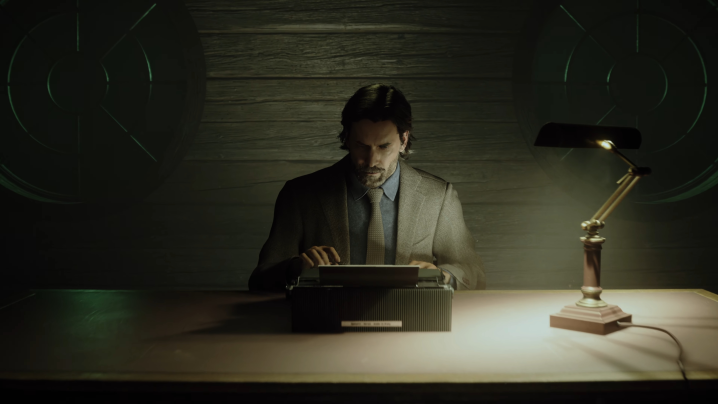
Even with a top-spec PC, Alan Wake 2 has some serious issues with texture pop-in. I tested the game on a handful of rigs, including a top-of-the-line PC packing an RTX 4090, Core i9-13900K, and PCIe Gen4 storage. Even on that PC, Alan Wake 2 showed clear texture pop-in issues.
They mainly arise when transitioning quickly between zones. The in-game menu — not the pause menu — is actually a playable space, and you’ll be popping in and out of it constantly. Each time, textures would take several seconds to load in, even on PCIe Gen 4 storage. The slower your storage, the longer it takes for the textures to load in. This is probably an issue that could be cleared up by DirectStorage, and I suspect Remedy developed the game around the quick storage interfaces available on the Xbox Series X and PlayStation 5.
I suspect this is related to the issue one of the DT editors experienced with a game-breaking bug, where assets wouldn’t load fully when transitioning, causing the game to break. As mentioned, I wasn’t able to recreate the problem, even with the RTX 2060 Super and a spinning hard drive, but it’s clear Alan Wake 2 has some bottlenecks when it comes to streaming in assets.
Occasional stuttering
Alan Wake 2 doesn’t have major stuttering issues, at least with an updated driver. I tested the game originally on Nvidia’s current driver, which doesn’t bring official support for Alan Wake 2. With this driver, you’ll experience major stuttering issues when transitioning between zones, particularly with Frame Generation turned on. Thankfully, those issues disappear when using the Alan Wake 2 driver, so make sure to update.
Even with the driver, I still encountered some occasional traversal stutter. This when you hit an invisible loading zone in the world, causing a stutter. These are few and far between, thankfully, and mainly arise with transitioning into larger areas of the game. I didn’t experience any shader stutter in my 10 or so hours with the game, thankfully.
We got the bugs
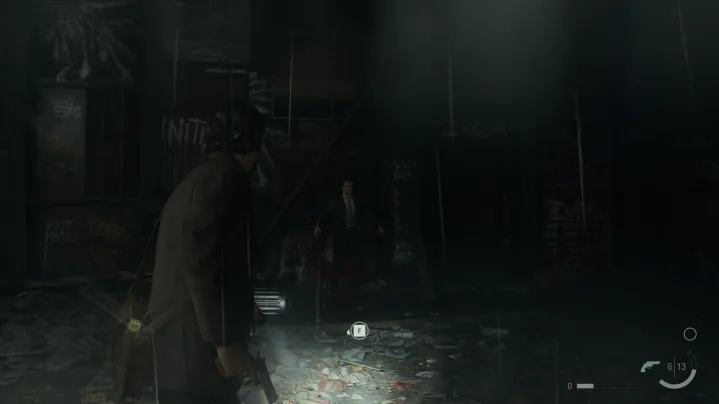
Alan Wake 2 isn’t perfectly polished on PC, and you’ll encounter some bugs if you pick up the game on release day. In addition to the game-breaking bug I mentioned in the intro, I encountered some characters in their T-pose when backtracking to certain areas, as well as issues with collision on objects.
Particularly when fighting enemies, I would sometimes be pushed on top of something in the environment like a rogue trash bag or bench. This would lock my character in place, causing a few seconds of wildly sprinting to get off whatever item I was stuck on. In one case, I had to reload my save, and in another, I had to force the game closed, losing about 10 minutes of progression. I’m hopeful these bugs will be worked out with a patch on release day, but given the semi-random nature of these things, it’s best to wait a bit if you want a completely polished experience.
Alan Wake 2 on PC: the verdict
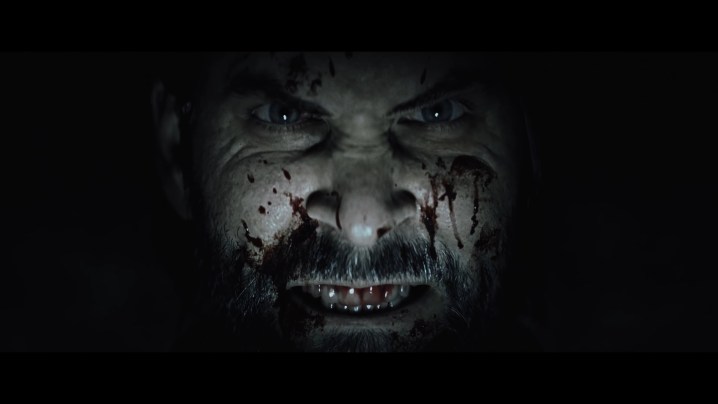
You can have two very different experiences in Alan Wake 2 depending on the hardware in your PC. The game is fairly stable regardless of hardware, but it’s still demanding. For lower-end PCs and those just meeting the minimum requirements, it’s best to wait for an upgrade or settle for turning down settings. Even if the PC release doesn’t have glaring issues like Star Wars Jedi: Survivor or Cities: Skylines 2, it’s still very taxing, and lower-end hardware will often need to settle for frame rates below 60 fps.
On the other hand, Alan Wake 2 is one of the most visually impressive games I’ve seen when using high-end hardware. Path tracing and DLSS 3.5 look incredible, and Alan Wake 2 is one of the few games we’ve seen in the past few years that provides a visual payoff for playing on the most powerful hardware on the market. There are still some issues, with texture pop-in and a handful of immersion-breaking bugs being the key problems, that I hope Remedy will address in a future update.
So, for those with high-end hardware, Alan Wake 2 is one to pick up, even just for the eye candy. For lower-end and older machines, it might be best to wait for an upgrade or to pick up the game on console.




